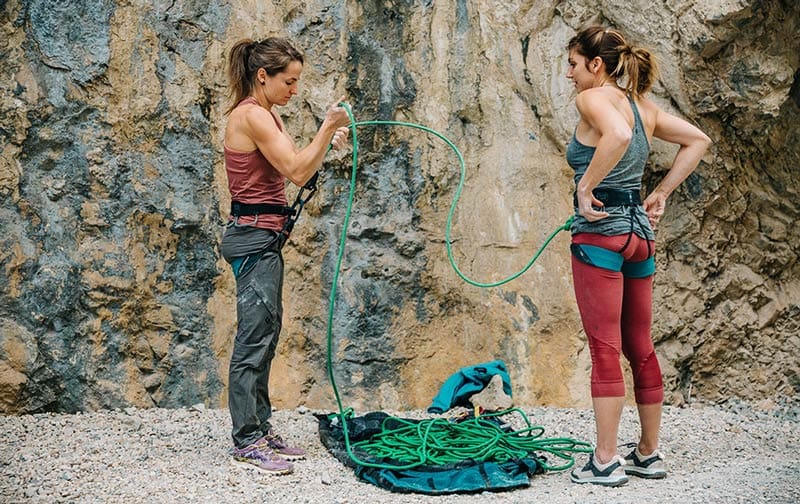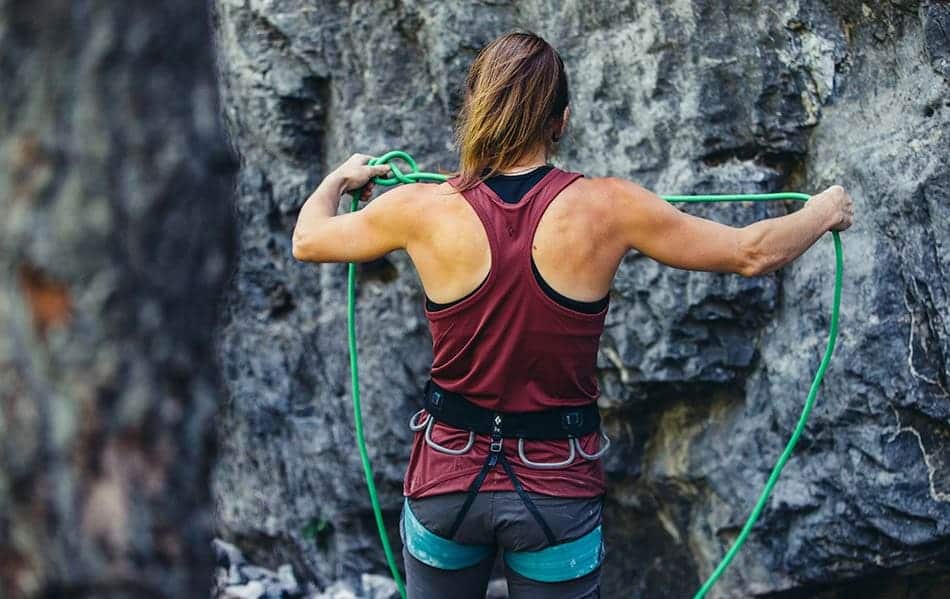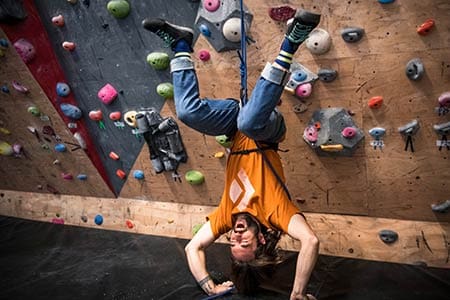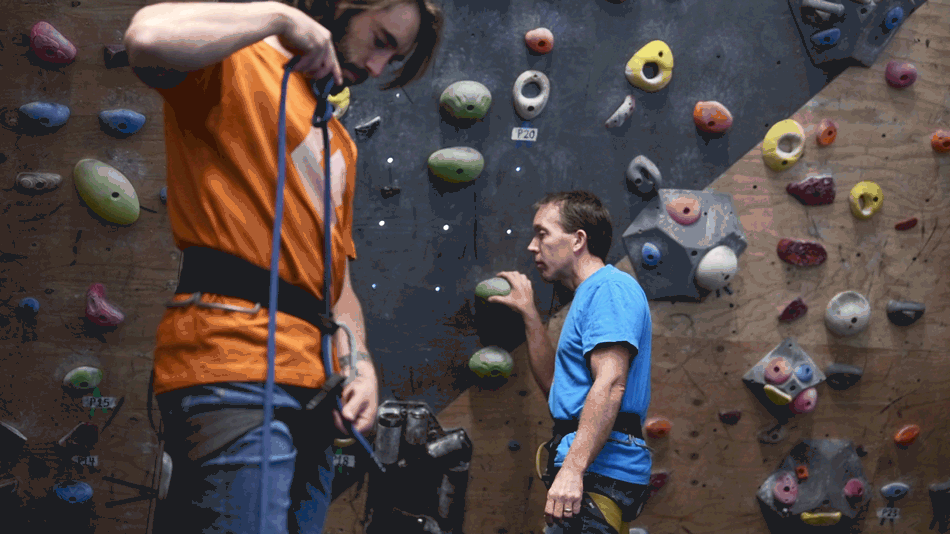At this point, we do not want to explain how to thread a figure of eight or a bullin. Much more is the question of whether you better binds the selected node from top to bottom or from bottom to top. Is one variant safer than the other? Chris Parker gets to the bottom of the matter in today's guest post.
A guest post by Chris Parker - Content Manager at Black Diamond
When climbing, the integration is almost a sacred ritual. That's just like that. The sacred covenant of all those who climb and secure others is based solely on the simple act of embedding, in which the rope is threaded through the harness and provided with a special knot. In other words, climbing all depends on our lives.
A few months ago, Black Diamond Climbing category director and equipment guru Kolin Powick (KP) arrived at the office in complete disarray. He was visibly worried when he told us what he had experienced in the climbing gym early in the morning.
"I saw a climber threading his rope from top to bottom through his harness," he said, upset. So this climber has threaded the rope through the upper binding loop of the climbing harness.
First, we wanted to check KP's suspicions and find out how most climbers get involved.
Claire Buhrfeind ties in the figure eight from the bottom up
On our list of potential interviewees on this subject was among others Claire Buhrfeind, US National Champion in the lead and speed disciplines. Of course she knows which knot to use. Surely all climbers know this very well. “In fact, I've never really thought about it. I always get involved right away, ”she explains. “I lead my rope through the tie-in loops from below. I think it's just an automated sequence of movements. When my trainer showed me the Bulin knot, I just copied what he did and I never changed it. So I know that I'm not making a mistake. "
I always get involved right away. - Claire Buhrfeind
Also the famous Basque climber Patxi Usobiaga could not throw a new perspective on KP's case, since he always integrates himself from the bottom up. Patxi made history as the first person who could climb an 8c + onsight. So you can trust him to understand something about integration. Patxi, who trains none other than Adam Ondra today, gave us a very methodical explanation of how to tie in from the bottom up: “When you tie in from the bottom up, you have the figure eight lying flat in front of you,” he explains. “A figure-of-eight knot threaded in this direction can be perfectly visually checked and tracked,” he argued.

Adam Ondra does not like the figure eight knot
And what means Adam Ondra on the subject? According to his coach, a loyal “bottom up” guy. How does the best climber in the world get involved? Kolin Powik met Ondra at the 2018 World Championships in Innsbruck and asked him the crucial question: "From bottom to top or from top to bottom"? "Depends on the knot," he replied with sparkling eyes, as if he had known beforehand that he would shatter KP's fragile reality. “I thread the Bulin from top to bottom,” explains Ondra. "The figure eight knot from bottom to top." Aha! There was the answer, shiny like a golden Camalot # 2 sun-lit in a crack in Indian Creek - Ondra binds herself in from both sides. "But ...", he added, "I hate the figure eight knot, so I never use it."

Kolin Powik's recommendation after all the interviews
We decided to ask the man who sent us on this trip. Now that KP has been running the Black Diamond QC Lab for over 11 years and having devoted most of his life to engineering, analysis and destruction testing of climbing equipment, we knew we would get at least one very informed opinion “From the bottom up, always and everywhere, ”commented our equipment guru. For Kolin there are clear advantages to bottom-up embedding. He gave us two reasons and gave us a concise explanation for incorporating from below.
Kolin Powik recommends binding from bottom to top
"When you tie in from the bottom, you can easily see how you thread the rope first through the lower and then through the upper tie-in loop," explained KP. "It is visually easy to verify that you are involved in both loops. If you thread from top to bottom, your hand disguises your eyes, making it difficult to see if both loops have been properly threaded - especially the lower tie-in loop (leg loop).
The leg loop absorbs the greatest load in a fall
But how important is it really to thread the rope through both tie-in loops? Would this be an argument to go for the “from below” method? “In our laboratory tests, we found that the leg loops absorb between 70 and 80% of the load in a fall,” said KP. "So if you accidentally only catch one tie-in loop, it would ideally be the leg loops, as they absorb most of the load."
That sounds obvious. If you start from the bottom, then you are more likely to catch at least the bottom tie loop (s), which statistically will catch the greater part of the impact stroke in a fall.

The argument with the leg loops has a hook
"If you only tie yourself into the binding point of the leg loops, a large part of the load will be absorbed, but the likelihood of you tipping over and falling out of the climbing harness is also much higher. Therefore, it may even be safer to pay more attention to the upper tie-in loop. In the past, people just looped a rope around their legs and hips and did not have a problem with it. "
So here's the final recommendation:
At the end of the day we have agreed: the integration, no matter which side, is the most important moment of your entire climbing day. You must never let yourself be distracted. So no matter which method you choose, if you always beide Threading bindings, this is the "safest" method.
"I have a friend who is very close to the climbing wall when she is wearing her face," Kolin added. "It signals the others to leave her alone and not to talk to her because she's doing something important right now."
You may also be interested in
—
Credits: Text Chris Parker, footage Black Diamond


